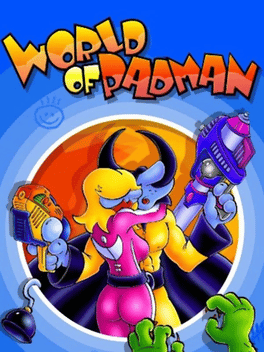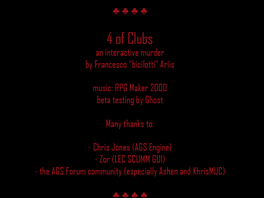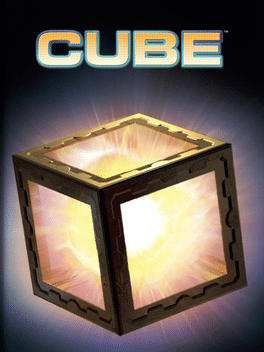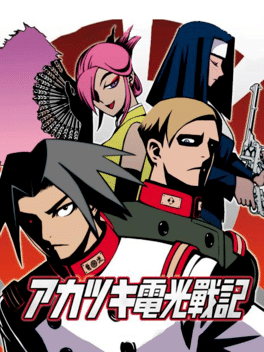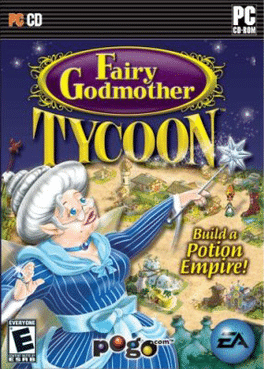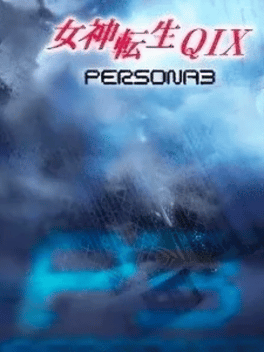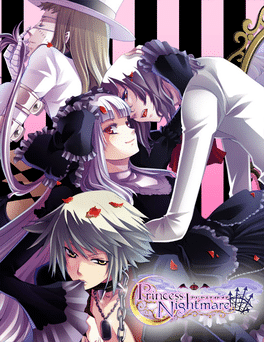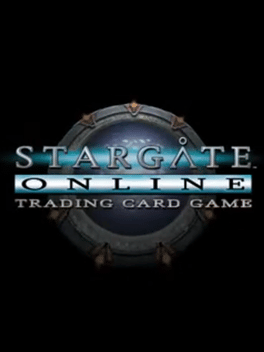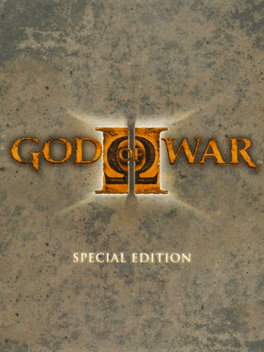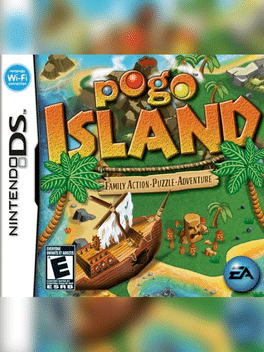New Games - Page 10129
-
World of Padman
2007
World of Padman
2007
World of Padman is an open source first-person shooter computer game available in both English and German. Originally it was a modification for the game Quake III Arena titled PadMod created in the year 2004. After the source code for Quake III Arena was released, the game became standalone. The idea is based on the Padman comic strip for the magazine PlayStation Games created by the professional cartoon artist Andreas 'ENTE' (German for "Duck") Endres, who is also the man who made many of the maps included with the game in 1998. The current version runs on an enhanced version of the ioquake3 engine, which is based on the Quake III Arena engine. -
Venice
2007
Venice
2007
star 7Venice is sinking and only you can save it! From the floating fortress of your golden gondola, you'll restore the city by returning its lost treasures. Sling costly coins, launch lovely lyres and ricochet ruby rings into the corresponding spaces overhead. Use your arsenal of special shots to create cascading combos and earn bonus points along the way. But beware shelves, chutes, swirlies and other traps will make things tricky, so you'll need power-ups like Wild Shot and Wings to help you sail through the levels. So grab your gondola and get ready with a majestic soundtrack, gloriously ornate artwork and four enduring game modes, Venice is a classic test of wits, will and skill. -
Alpha Prime
2007
Alpha Prime
2007
star 5.8Somewhere in deep space, at an apparently abandoned mining base on the asteriod Alpha Prime, something has gone terribly wrong. Miners were warned that the hubbardium they were mining was too dangerous, but the lure of unimaginable wealth was too strong. Now, something has happened to them and it's up to you to save them and face an unknown threat. Equipped with a surplus of advanced weapons and devices--including a variety of robots and manipulators, surveillance cameras and security systems that can be hacked, controlled and used to complete your task--your mission is simple: Get in, get 'em, and get out! 10 levels of fast-paced, unrelenting action including mining station, spaceship hangar, magnetic railway or asteroid surface Non-playable characters aid you in your mission to save the miners and get off the asteroid Countless enemies including Special Forces soldiers, robots and deranged miners 8 futuristic weapons including pistols, shotguns, machine guns, grenades… Vehicles can -
Legend of the Dragon
2007
Legend of the Dragon
2007
star 3Legend of the Dragon is a 3D versus fighting game that plays like a 2D versus fighting game. The game is based on the animated series of the same name and resolves around a battle between good and evil. Woo Yin an evil Zodiac Master plans to steel the powers of the twelve guardians of the Chinese Zodiac temples in his goal to rule over China. -
Rental House
2007
-
4 of Clubs
2007
-
Cube
2007
Cube
2007
Set within in a 3D cubic world, The Cube is the newest puzzle addiction to hit the PSP & market. You’ll explore your way through suspended 3D platforms and mazes with themed sets of variables suited to that level. The Cube will provide the fun-factor that puzzle gamers have come to expect while adding action elements to broaden the PSP gamers' experience. -
Akatsuki Blitzkampf
2007
Akatsuki Blitzkampf
2007
Akatsuki Blitzkampf, also known as Akatsuki Denkō Senki in Japan, is a dōjin 2D fighting game, developed by the dōjin circle SUBTLE STYLE. It is a final retitled version of Akatsuki Prototyp 1. -
Paradise Lost
2007
-
Adventures of Keith Night: After a Shadow
2007
Keith Night woke up in a gutter. Having no idea what he was doing there, he had to trace his steps from last night and find out what he was after. But Keith had no idea of the things to come... -
Konami Classics Series Arcade Hits
2007
star 6.9Konami Classics Series Arcade Hits is a compilation of 15 games from the early days of Konami: - Scramble - Horror Maze (Tutankham) - Pooyan - Time Pilot - Track and Field - Roc 'N Rope - Basketball (Super Basketball) - Circus Charlie - Road Fighter - RainbowBell (TwinBee) - Yie Ar Kung-Fu - Shao-Lin's Road - Gradius - Rush'n Attack - Contra When Tutankham and Super Basketball were released in the U.S. they kept their original names however in this collection they are named as Horror Maze and Basketball. It is unknown why the games' names were changed. This compilation also marks the first North American appearance of the original TwinBee arcade game in any form. -
Megami Tensei QIX: Persona 3
2007
Megami Tensei QIX: Persona 3 (女神転生QIX ペルソナ3) is a Persona 3-themed puzzle game developed for mobile phones. It was offered through the Atlus and Bbmf mobile telephone site called Megaten α starting on April 27, 2007. It functions similarly to the game it is titled after. Players complete levels by capturing at least 80% of the board. Enemies appear as Shadows and artwork and music from the original game appear. -
Shin Megami Tensei: Tokyo Requiem
2007
Shin Megami Tensei: Tokyo Requiem is an RPG developed by Atlus and Bbmf for mobile phones. -
Princess Nightmare
2007
Princess Nightmare
2007
An otome visual novel with a gothic setting developed by Karin Entertainment. -
Stargate Online Trading Card Game
2007
A downloadable trading card game based on the Stargate universe from Sony Online Entertainment. -
God of War II: Special Edition
2007
God of War II is an action-adventure game developed by Santa Monica Studio and published by Sony Computer Entertainment (SCE). First released for the PlayStation 2 console on March 13, 2007, it is the second installment in the God of War series, the sixth chronologically, and the sequel to 2005's God of War. The game is based on Greek mythology and set in ancient Greece, with vengeance as its central motif. The player character is protagonist Kratos, the new God of War who killed the former, Ares. Kratos is betrayed by Zeus, the King of the Olympian Gods, who strips him of his godhood and kills him. Slowly dragged to the Underworld, he is saved by the Titan Gaia, who instructs him to find the Sisters of Fate, as they can allow him to travel back in time, avert his betrayal, and take revenge on Zeus. The gameplay is similar to the previous installment. It focuses on combo-based combat which is achieved through the player's main weapon—Athena's Blades—and secondary weapons acquired throughout the game. It featur -
Buzz! The Mega Quiz
2007
Buzz! The Mega Quiz
2007
star 8Buzz!: The Mega Quiz released as Buzz! The Maha Quiz in India was developed by Relentless Software and is the fourth game in the Buzz! series for the PlayStation 2, alongside Buzz! Junior: Robo Jam. Buzz! The Mega Quiz has over 5,000 questions.[1] Along with Buzz! Junior: Jungle Party, this was one of the first Buzz games released in North America, also the first game in the series to have a 12+ rating by PEGI. -
Pogo Island
2007
Pogo Island
2007
star 6Get ready to be transported to a tropical island full of adventure and puzzle-solving fun in Pogo Island, a unique title featuring the five most popular games from Pogo.com. When everyone's favorite Pogo mascots are shipwrecked on a deserted island, it's up to you to save the day. Hone your skills at five classic Pogo games, including Poppit!, Word Whomp, Squelchies, Tri-Peaks Solitaire, and Phlinx, and then set off on an island adventure to reunite with your Pogo friends.

